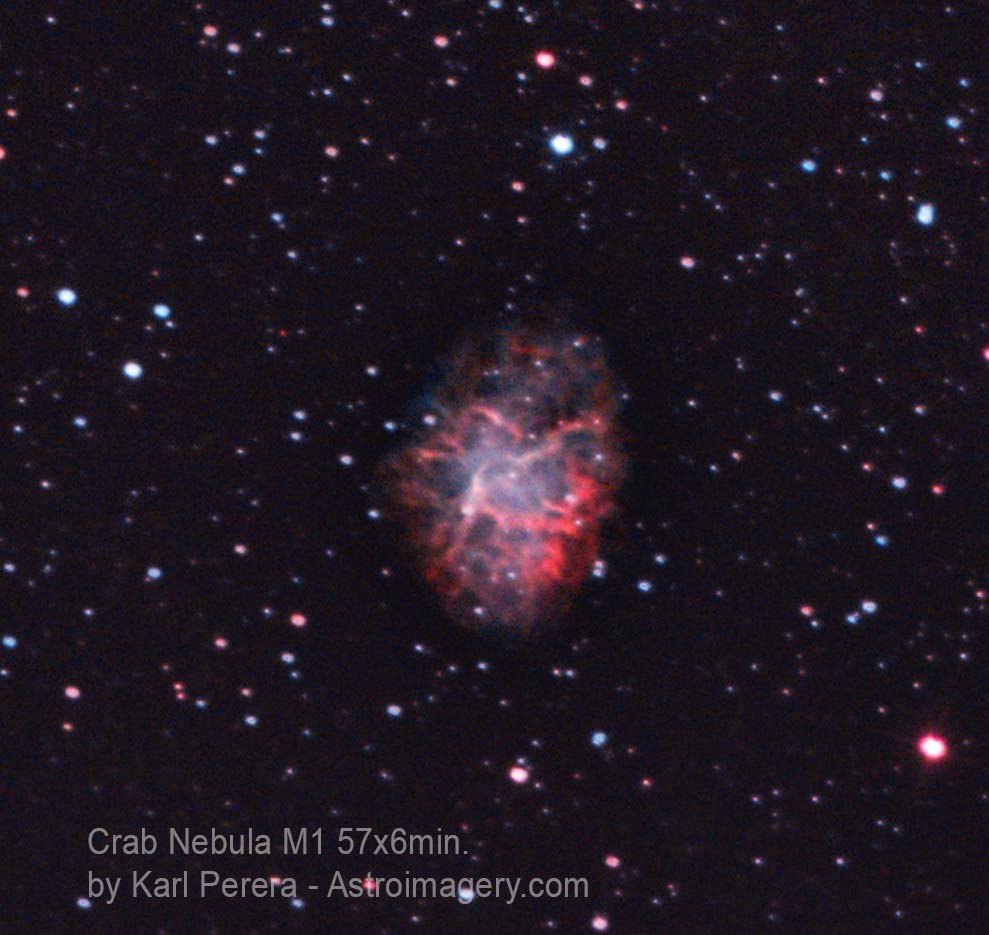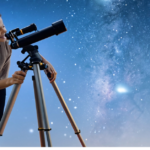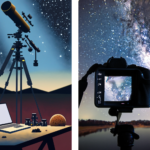Table of Contents
Types of astrophotography vary but they are a fun and challenging form of photography that involves taking pictures of celestial objects in the night sky. Astrophotography lets us see the beauty of the universe from where we live on Earth. We can take pictures of the beautiful Milky Way galaxy or see the Northern Lights. There are different kinds of astrophotography, and each has its own challenges and rewards. In this blog post, we’ll look more closely at some of the most popular kinds.
What is Astrophotography?
Before we talk about the different kinds of astrophotgraphy and compare them, let’s remind ourselves what astrophotography is.
Astrophotography is the art of photographing the night sky.
The Many Types of astrophotography
There are different forms of this branch of photography which we will consider in this article. Which one you chose depends on what interests you the most about our inspiring universe.
Deep Sky Astrophotography
The first of the types of astrophotography we will consider is what interests me the most.
Deep sky astrophotography involves taking images of objects beyond our solar system, such as galaxies, nebulae, and star clusters. Since these faraway objects can be hundreds of millions of light years away from us, it is hard to take pictures of them. For deep sky astronomy, you need special equipment like a telescope with a tracking mount and a camera that can take long exposures. To photograph deep sky targets effectively, astro photographers often use narrowband filters that isolate specific wavelengths emitted by the subject being photographed.
Despite this being one of the most difficult types of astrophotography, this is the area that I find most interesting and if you check my images you’ll see most of my pictures are of galaxies and nebulae. These objects are awe-inspiring!
I guess I must really like a challenge, because I’ve spent many long evenings in all kinds of weather trying to take pictures of these hidden gems.
Here’s an example of a deep-sky object that I’ve photographed:

The Crab Nebula is a leftover part of a supernova that is about 6500 light years away from us. The above image is the result of almost six hours of six-minute exposures I stacked and processed in Photoshop. Quite beautiful, isn’t it? Here’s some more information about M1 from NASA.
Planetary astronomy photography
Planetary astrophotography means taking pictures of planets like Jupiter, Saturn, Mars, and Venus that are in our solar system. Unlike deep sky astrophotography which requires long exposures or specialized filters for capture, planetary astrophotographers employ “lucky imaging” to capture the best possible images of planets. Lucky imaging involves taking several short exposures of the same planet and then stacking them together to make one high-resolution image.
I have tried planetary astrophotography by taking pictures of the Moon, Jupiter, and Saturn. One way I took pictures of these planets was to record a short video of about two minutes, then use software like Registax and Pipp to turn the video into many hundreds of still images, which I then stacked and edited.
Below you can see an image created in this way of Saturn that I took a few years ago. Excuse the quality as this was one of the first types of astrophotography I tried when I got my telescope!

This was the first and only time I tried to take pictures of Saturn. If I had focused on planetary astrophotography, my pictures would be much better now. When I first saw and took a picture of Saturn, I remember being amazed and awed by it. That’s when I was hooked on this hobby.
Solar Astrophotography
Solar astrophotography involves taking photographs of the Sun and its features, such as sunspots, prominences, and solar flares. To do this effectively, astrophotographers need specialized solar filters that block out most of the Sun’s light so they can safely capture images on its surface. Because these things change so quickly over time, astrophotographers have to wait for the best conditions to take good pictures.
What kind of filter do you need for this kind of astrophotography? There are four different types of solar astrophotography filters:
- Square – these filters are square-shaped and need a filter holder to hold them in front of your lens.
- Slip on – these simply fit over your telescope lens aperture and the advantage of these is that you can quickly change the filter as you need to.
- Threaded – these are more usual for DSLR lenses. They have standard fittings and once on they stay on.
- Drop-in – these can fit into your camera or telescope viewfinder.
What specific types of solar filters are there and which is the best for astrophotography?
The best to use and cheapest are mylar solar filters. They can be used for photography and viewing. Nd filters are used to make your image darker and cannot be used for viewing. There are also hydrogen alpha filters that can be used but these are rather specialised.
This is one of the types of astrophotography I haven’t tried yet, but it looks interesting. I might try this one day and see what I can photograph.
Lunar Astrophotography
In my experience this is one of the easiest types of astrophotography a beginner can try. Simple and less costly equipment can be used to get great results.
Lunar astrophotography is taking pictures of the Moon and its features, such as craters, mountains, and valleys. This method doesn’t require special filters and can be done with a telescope or telephoto lens. However, it can be hard to do because the Moon is bright and the lighting changes as it moves across the sky.
I found it easy to take pictures of the Moon, and 10 to 20 pictures taken in a fraction of a second are all you need to get a great picture like the one I took below:

The picture above is sometimes called a Mineral Moon and sometimes a True Colour Moon. Look at how much detail I’ve been able to get. You too can do this with some practice!
Here are a few of my best astrophotography tips for taking better lunar photographs:
- Use a very fast exposure time setting such as 1/50 or 1/250 of a second. I found that because the moon is so bright any longer than this will overexpose your photos and you will not be able to see the details on the moon such as craters and shadows.
- When taking pictures of the moon you should use a tripod. One good tip is to set the shutter delay to about two seconds to avoid any camera shake. This will make your lunar shots clearer and sharper because there will be no blurring caused by camera vibration.
Time-lapse Astrophotography
In time-lapse astrophotography, multiple images are taken over time and then put together to make a video or still photo. With this method, you can take pictures of things like meteor showers, eclipses, star trails, and planets moving across the night sky. To capture time-lapse astrophotography, you will need a stable tripod or tracking mount plus a camera capable of taking long exposures.
Another tip for time-lapse astrophotography is to make sure not to use the internal noise reduction setting of your DSLR camera. This wastes time and this is better used to take and stack more images. This will improve your images. Noise can always be reduced in your processing software.
Astrophotography is an exciting and rewarding hobby that allows us to explore the beauty of the universe. There is different types of astrophotography for everyone, whether you want to take pictures of deep sky objects, planets, the Sun or Moon, or time-lapse videos or pictures of celestial events. Astrophotography can be truly amazing if you have the right tools and know how to use them. So grab your camera and begin exploring our universe today!
Again, I’m interested in this kind of astrophotography, but I haven’t tried it yet. Someday I will. I love those photos with star trails, they are so cool!

Milky Way Astrophotography
Milky Way astrophotography involves taking images of our home galaxy, the Milky Way. Light pollution makes it hard to see many details of this faraway object, which is home to billions of stars. Astrophotographers usually go to remote areas with little light pollution and use special equipment like a wide-angle lens, a tracking mount, and a camera that can take long exposures to take pictures of the Milky Way.
Milky Way photography can be awe-inspiring because it lets us see how big and beautiful our own galaxy is. With patience, persistence, and the right gear, anyone can take beautiful pictures of this natural phenomenon. You can do this kind of astrophotography without any tracking.

When I first started astrophotography, this was the first kind of photography I did with just a tripod and a DSLR camera. I took pictures that lasted 15 to 20 seconds, and the results at the time made me want to keep doing astrophotography. Taking pictures of the Milky Way is not hard as long as you have a dark sky, a good camera and lens, and a sturdy tripod.
Here are a few tips how to improve your milky way photography:
- Don’t bother to guide and keep your exposures at 20 seconds or less. This will create sharper images. This also means you can use simpler equipment and spend less.
- Another tip to improve your milky way images would be to use the very best lens you can wth an f-stop of 1.8 or better. Focus needs to be perfect. Use a bahtinove mask to get it spot on.
Some photographers take this one step further in what is called landscape astrophotography. This has become extremely popular these days!
Here’s a great choice of DSLR camera for this type of astrophotography:
Please keep in mind that if you want to try any of these types of astrophotography, you’ll need to learn how to stack and process your photos, which can take a long time to master. Processing your photos is half the battle because it’s easy to overstretch them and ruin otherwise good photos if you don’t know what you’re doing.
Conclusion
So, now you know how many different kinds of astrophotography there are.
Which of these types of astrophotography is best depends on you and what astronomical objects interest you. Do you want to photograph the craters of the moon, the rings of Saturn, or the red spot of Jupiter? Or would you prefer to take pictures of nebulae and star clusters? Maybe capturing the Milky Way against a glorious landscape is your thing? Whatever type of astrophotography interests you most, go for it!
Give it a shot today!








